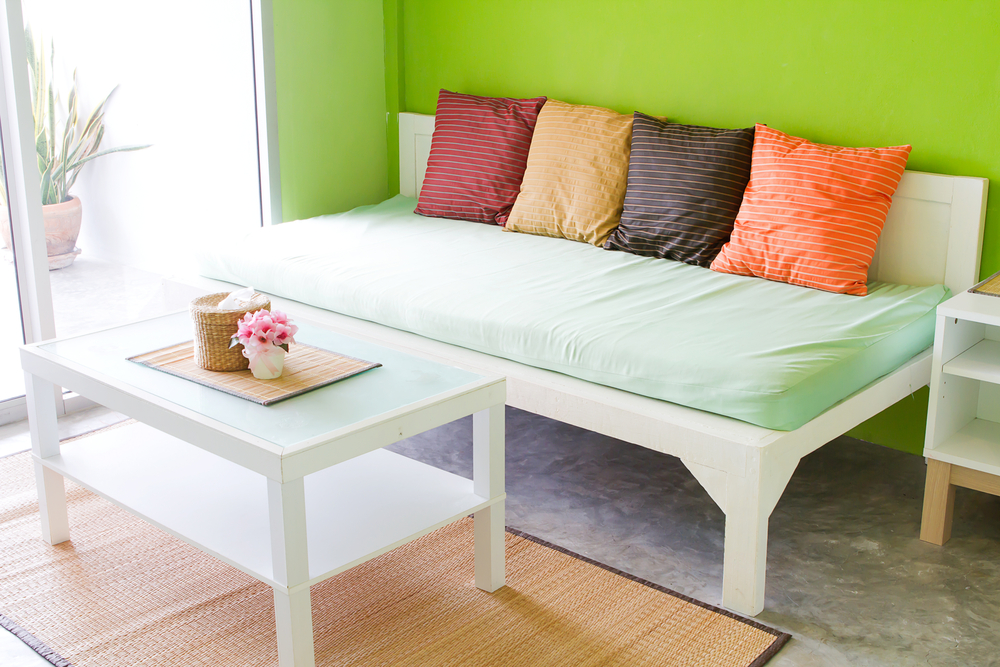In celebration of Long & Foster’s 50th anniversary, we’re taking a look back at popular interior paint colors throughout the decades. From Exuberant Pink in 1968 to Crisp Gray in 2018, trends in interior paint colors have gone from one extreme to the other, with every color imaginable in between.
To gain some perspective on this topic, we reached out to Sherwin-Williams, which recently celebrated its 150th anniversary and has looked back at the evolution of color collections through the decades. Michael Plank, director of color marketing and design at Sherwin-Williams’ corporate headquarters, shared his insights with us.
Psychedelic Colors Dominated the 1960s
During this era, the Beatles were introduced to the world and so were bright, modern, clashing colors in psychedelic and paisley patterns. Interiors were painted with colors like “Exuberant Pink,” a vibrant pink color and a bright orange color called “Navel.” Geometric patterns also appeared in black and white.
Earth Tones Led the 1970s
The United States celebrated its first Earth Day in 1970, and with it began a trend of earth tones not only with interior paint colors, but also in appliances. Colors like Avocado, Amber Wave, Folksy Gold, Jute Brown and Practical Beige worked together in patterns and solids to decorate homes in this decade.
Mauve Reigned Supreme in the 1980s
Michael Plank at Sherwin-Williams called the increasing use of pastels during this decade, “the Miami Vice effect.” The popular television show influenced the use of mauve with baby blue and gray coordinates. Other soft Sherwin-Williams colors such as Dressy Rose, Favorite Jeans and Flattering Peach were snapped up by consumers during this era.
Earthy Reds Ruled the 1990s
The emergence of McMansions and Tuscan-style influences brought hues of beige, rustic golds, terra cotta, putty, sage and earthy reds, according to Sherwin-Williams. “People became environmentally conscious at this time,” said Plank. “This also contributed to the trend back to beige and earth tones.” Faux painting became extremely popular and replaced wallpaper as the preferred wall covering, especially in high-end homes. Also popular in 1990s homes were earthy red accent walls with complementary warm colors in Bungalow Beige, Urban Putty, Whole Wheat, Basket Beige and Spiced Cider.
Latte and Spa Tones Influenced the 2000s
While the Tuscan look remains popular in this decade, a light brown tone known as Latte became one of Sherwin-Williams most popular colors, coupled with contrasting shades of blue. Later in the decade, colors influenced by coastal vacations or a trip to the spa gained popularity, including Origami White, Aquitaine, Sea Salt and Well-Bred Brown.
Gray is the New Neutral in the 2010s
No longer seen as bland, gray took over from beige as the new neutral in the most recent decade. Various shades of gray are often used on their own or coupled with bright accent walls and accessories, to make a dramatic statement. “We’re seeing more color and fewer patterns in rooms,” said Plank. “The trend now is to introduce a pop of color in your ceiling paint, on a feature wall or in a hallway.” The use of colorful patterns is primarily seen in throw pillows, according to Plank.
Black also is gaining in popularity as a paint color, and blush tones are being introduced into interior color schemes. A few of the most popular colors from Sherwin-Williams this year include Dorian Gray, Knitting Needles, Dovetail and Tricorn Black.
If you’re planning to sell your home this year or just want an updated look, a fresh coat of paint in a neutral shade can make your home look and feel spacious, clean and aesthetically pleasing.

Michele
Remember ceiling colors? There backkkkkk!